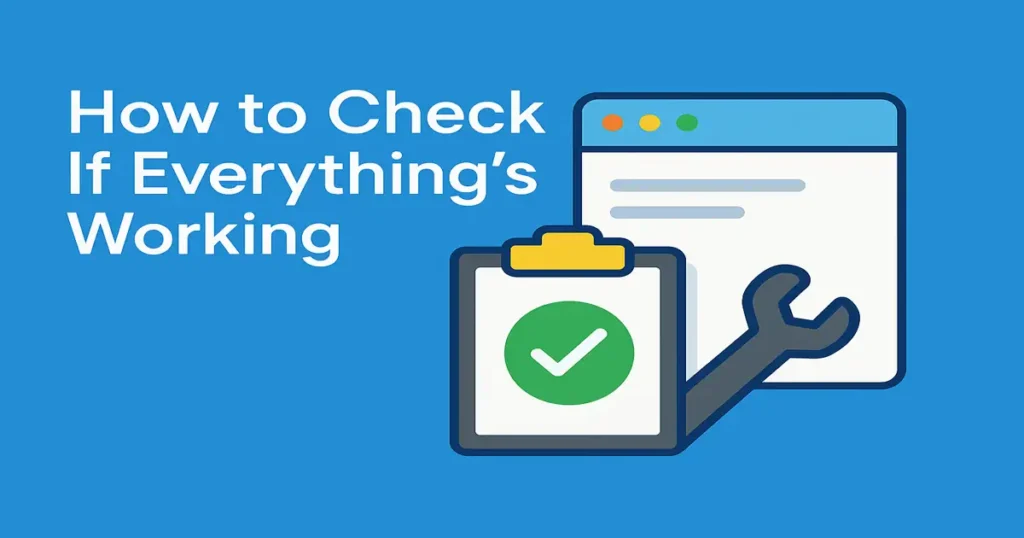Technical SEO is the process of optimizing your website’s structure and backend setup so search engines like Google can easily crawl, understand, and index your pages. It focuses on how your site functions behind the scenes, not on content or backlinks.
Think of it like a car. The content is the paint and design. Technical SEO is the engine and tires. If those things don’t work, the car won’t go anywhere, no matter how good it looks.
Why It Matters More Than Ever

Even if you write great blog posts or get lots of links, it won’t help much if:
- Your site is slow
- It’s hard to use on phones
- Google can’t access your pages
Technical SEO fixes these problems. When done right:
- Google finds your content faster
- Your site loads quicker
- Visitors stay longer
- Your chances of ranking go up
This is the stuff that gives your site a strong foundation.
How Technical SEO Is Different from On-Page and Off-Page SEO

Let’s make this clear:
- Technical SEO is about how your website runs, speed, mobile, crawlability, etc.
- On Page, SEO is about your content, keywords, titles, internal links, and formatting.
- Off Page, SEO is about things outside your site, like backlinks or social shares.
All three matter, but technical SEO comes first. If your site is broken, no amount of content or links can fix that.
The Basics You Should Fix First
Here are the core things to look at, these are your technical SEO “must-haves.”
1. Can Google Crawl Your Site?
Make sure your pages are easy to find through internal links. Make sure your robots.txt file is not accidentally blocking important pages from being crawled by search engines. If Google can’t crawl it, it won’t rank it.
2. Are Your Pages Being Indexed?
Being crawled is one thing, but being indexed means Google adds your page to search results. If your page has no index tag, duplicate content, or errors, it might be skipped.
Use Google Search Console to see which pages are indexed and identify any that are missing.
3. Does Your Site Work on Mobile?
Since most users browse on mobile devices, ensure your website is mobile-friendly, clean in design, fast to load, and fully functional on smaller screens.
4. Is Your Site Secure?
Always use HTTPS. If your site shows ‘Not Secure,’ resolve it immediately, Google prioritizes secure websites, and users trust them more.
5. Is It Fast?
Google cares about speed. So do your visitors. A slow site drives people away. Pay attention to:
- LCP (how fast your main content loads)
- FID (how quickly your site responds when someone taps)
- CLS (does your content shift around while loading?)
You can check all of this in PageSpeed Insights.
6. Is Your Site Well Organized?
Keep your structure simple. Use categories and subcategories only when needed. Add breadcrumbs if you can.
7. Are You Linking Your Pages Together?
Use internal links to connect related pages. If it makes sense, link a blog post to your services page. This helps Google and your visitors move around easily.
How Google Sees and Understands Your Site

First, It Crawls
Googlebot follows links across your site. If your page isn’t linked to anything, it might not be found.
Then, It Indexes
If your page has useful content and no errors, Google adds it to its search index. If not, it gets skipped.
Help Google Out
You can guide Google by:
- Using a robots.txt file (to say what to skip)
- Using meta tags (to say what to index)
- Submitting a sitemap in Google Search Console
Got a Big Website?
If your site has a large number of pages, guide Google toward the most valuable ones, eliminate low-quality pages, fix broken links, and maintain a clean sitemap.
What About JavaScript?

Some sites use JavaScript to load content. That’s fine, but if your most important info only shows up after scripts load, Google might miss it.
Use Google’s Mobile-Friendly Test to see how your pages appear on mobile. If key content isn’t showing, ask a developer to place it in plain HTML so search engines can access it.
Add Extra Info with Schema
Schema markup helps Google understand your content better. For example:
- Blog post? Use Article schema.
- FAQ section? Use FAQ schema.
- Selling something? Use Product schema.
This can help your pages show up with rich results in search, like stars, prices, or drop-down FAQs.
Use free tools like Google’s Rich Results Test to make sure your schema is working.
Fast Fixes You Can Do Today
These won’t take long but make a real difference:
- Fix broken links
- Add redirects for old or moved pages
- Check that you only have one version of your site live (www or non-www, not both)
- Add canonical tags to avoid duplicate content
- Submit your sitemap
- Remove or improve thin content
How to Check If Everything’s Working

You don’t need fancy software. Here’s what to use:
Free Tools:
- Google Search Console: Use it to identify crawl errors, and indexing issues
- PageSpeed Insights: to check site speed
- Screaming Frog (free version): to scan your pages
- GTmetrix: to get a full-speed report
What to Look For:
- Are your pages being indexed?
- Any broken links?
- Are you passing Core Web Vitals?
- Is your site mobile-friendly?
- Is your site secure?
Check every 2 to 3 months or after any big site changes.
Keep Things Running Smoothly
Technical SEO is not a one-time task. Stay on top of it by:
- Updating your plugins and CMS regularly
- Rechecking speed and mobile performance
- Watching for crawl issues in the Search Console
- Fixing broken links quickly
- Reviewing your structured data when publishing new content
Even small checks like these help keep your site healthy.
Final Thoughts
Technical SEO doesn’t have to be confusing or complicated. Think of it like making sure your website is easy to access, fast to load, and simple to use for both people and search engines.
Start small. Fix the basics. Run regular checks. You’ll be surprised how much better your content performs when the technical side is solid.
It’s not about being perfect. It’s about being clear, fast, and friendly to users and Google.
FAQs
Do I really need to worry about technical SEO if my content is good?
Yes, you do. Even the best content won’t rank if search engines can’t crawl, understand, or index it. Technical SEO makes sure your content can actually be found and shown in search results.
How do I know if my website has technical SEO issues?
The easiest way is to use tools like Google Search Console or Screaming Frog. They’ll show if pages aren’t being indexed, if links are broken, or if your site is too slow.
Can I fix technical SEO problems without hiring a developer?
Yes, many technical SEO fixes can be done without coding. Tools, plugins, and guides can help you fix things like redirects, speed issues, and mobile errors. But for deeper issues, a developer may be helpful.
How often should I check my site’s technical health?
It’s a good idea to do a full check every 2 to 3 months. You should also check after any big changes, like redesigning your site or moving to a new hosting provider.
What’s the first technical SEO fix I should make?
Start with the basics: make sure your site loads fast, is mobile-friendly, and that your pages are indexed correctly. These fixes have the biggest impact and are usually the easiest to handle.
Take action, use checklists, and stay consistent. Want to go deeper? Check out these valuable guides from Technical Forest:
Start with the basics, build up, and let Google do the rest.







